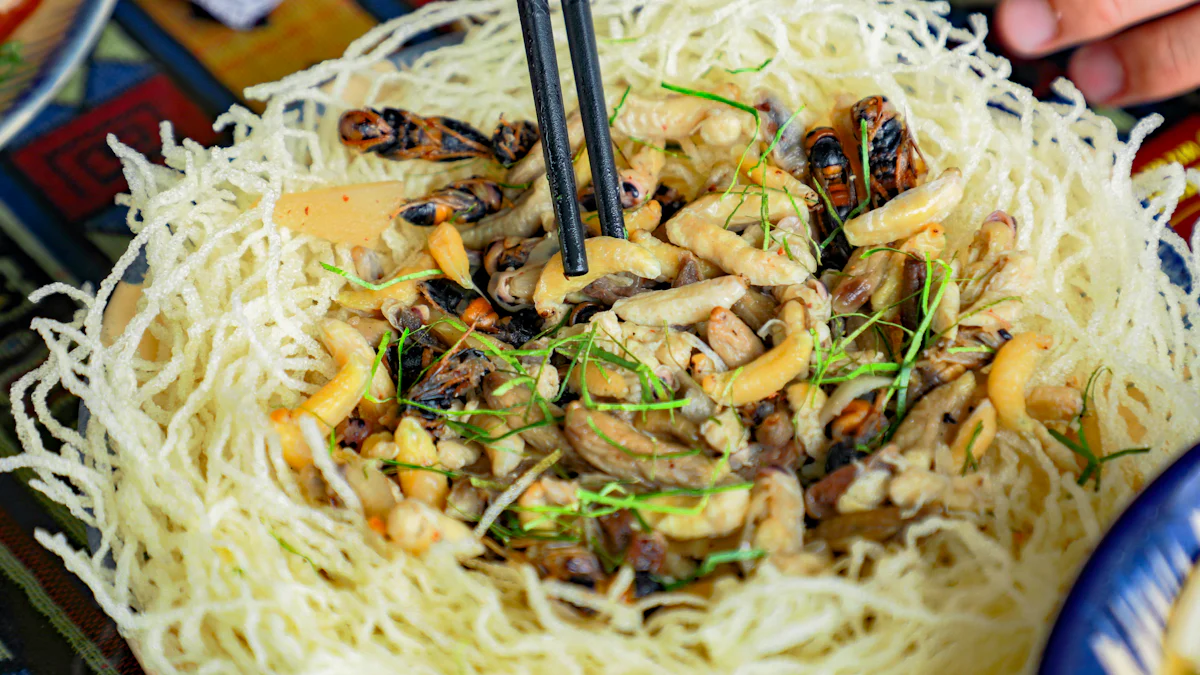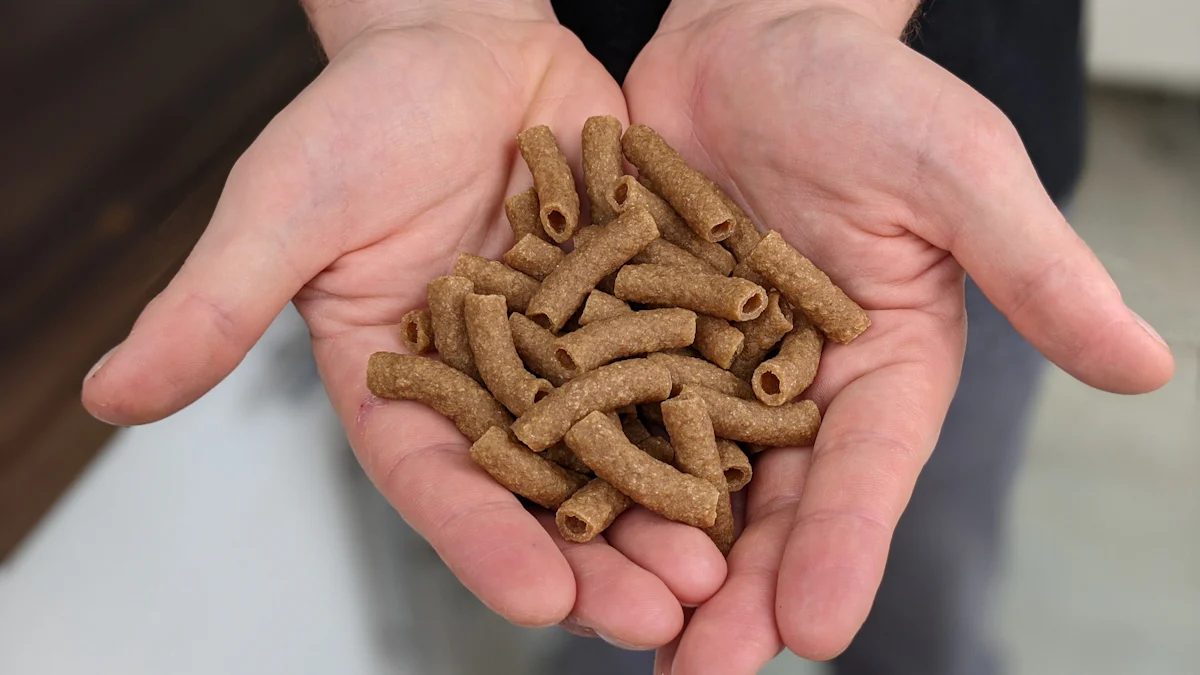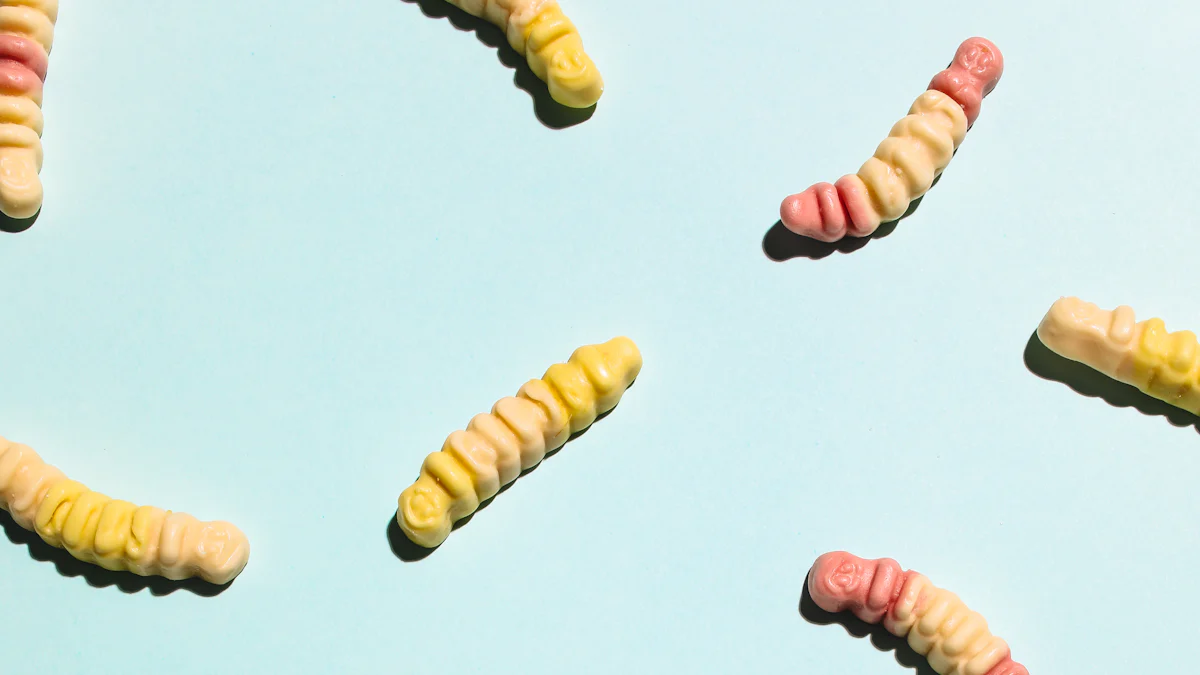
Dried mealworms pack a punch when it comes to nutrition, particularly with their dried mealworm protein content, which boasts an impressive 53% protein by weight. This makes them a powerhouse compared to many traditional protein sources. For instance, their protein content rivals chicken and surpasses beef. Along with protein, they deliver essential amino acids, healthy fats, and dietary fiber. These nutrients support both human and pet health. Plus, their fat profile leans toward unsaturated fats, which are better for the heart. As a bonus, dried mealworms offer a sustainable and eco-friendly way to meet dietary protein needs.
Key Takeaways
- Dried mealworms are 53% protein, making them very nutritious.
- They have omega-3, B12, and iron, which help muscles and the brain.
- Growing mealworms is better for the planet. It uses less water and land and makes fewer harmful gases.
Nutritional Composition of Dried Mealworms

Dried Mealworm Protein Content and Amino Acids
Dried mealworms are a fantastic source of protein, with dried mealworm protein content making up 53% of their weight. This high protein density rivals chicken and even surpasses beef. What makes them even more impressive is their complete amino acid profile. They contain all essential amino acids, which are vital for muscle growth, tissue repair, and overall health.
Here’s a closer look at their amino acid composition:
| Amino Acid | Concentration (g/kg dry) |
|---|---|
| Lysine | 35.9 |
| Leucine | 31.5 |
| Isoleucine | 22.1 |
| Valine | 28.2 |
| Methionine | 10.1 |
| Tryptophan | 1.50 |
These amino acids also help with mineral absorption and maintaining a healthy metabolism.
Fat, Fiber, and Energy Content
Dried mealworms contain about 28% fat, most of which are unsaturated fats like omega-6 and omega-9. These fats support brain function and heart health. They also provide energy, making them a nutrient-dense food.
In addition, dried mealworms have 6% fiber, primarily from chitin, a component of their exoskeleton. Chitin acts as a prebiotic, promoting the growth of good gut bacteria and aiding digestion.
Vitamins and Minerals in Dried Mealworms
Dried mealworms are packed with essential vitamins and minerals. They are rich in B vitamins, including B12, which supports brain function and red blood cell production. They also contain:
- Vitamin E: Protects cells from damage.
- Calcium: Strengthens bones and teeth.
- Iron: Helps transport oxygen in the blood.
- Zinc: Boosts the immune system and aids wound healing.
This nutrient combination makes dried mealworms a powerhouse for both humans and animals.
Benefits of Dried Mealworm Protein
Advantages for Human Health
Dried mealworms offer a wealth of nutrients that benefit human health. Their high protein content, about 53%, supports cell repair and regeneration. This makes them a great choice for maintaining muscle mass and boosting immune function. They also provide essential fatty acids like omega-3 and omega-6, which promote brain function and cardiovascular health while reducing inflammation.
In addition, dried mealworms are rich in B vitamins, especially B12, which is rare in plant-based foods. Vitamin B12 helps with brain function and red blood cell production. Minerals like calcium, iron, and magnesium further enhance their nutritional profile. Calcium strengthens bones, while iron supports oxygen transportation in the blood. Magnesium plays a role in muscle and nerve function. With this nutrient density, dried mealworms align well with dietary recommendations for a balanced diet.
Nutritional Benefits for Pets and Livestock
Pets and livestock thrive on the nutrients found in dried mealworms. For pets like dogs and cats, the high protein content helps maintain muscle mass and overall health. Essential fatty acids improve skin and coat health, while vitamins like B12 and E boost immunity. These nutrients make dried mealworms a wholesome snack for pets.
Livestock, such as chickens and pigs, also benefit from dried mealworms. Their protein content, around 51%, surpasses soybeans, making them an excellent feed option. Mealworms improve growth performance and feed efficiency in poultry. They also promote healthy feather growth and vibrant coloration in birds. For livestock, dried mealworms provide energy and essential nutrients, supporting overall well-being.
Environmental Sustainability and Mealworm Farming
Mealworm farming is a sustainable alternative to traditional livestock farming. It requires significantly less water, land, and feed. For example, the water footprint for mealworm production is 3.5 times smaller than beef. Mealworms also produce fewer greenhouse gases, emitting only 2–122 g of CO2 per kilogram of growth compared to 2850 g for beef cattle.
Additionally, mealworms can be raised on agricultural by-products, reducing food waste. Their compact farming setup minimizes land use and transportation needs, lowering carbon emissions. With a smaller ecological footprint, mealworm farming offers an eco-friendly way to meet global protein demands.
Practical Applications of Dried Mealworms

Incorporating Dried Mealworms into Human Diets
Dried mealworms are versatile and can be used in many dishes. Their nutty flavor and crunchy texture make them a unique addition to meals. Here are some popular ways to include them in your diet:
- Mealworm Lentil Salad: Add roasted mealworms to a fresh lentil salad for extra protein and crunch.
- Mealworm Tacos: Use fried mealworms as a topping for tacos, paired with fresh veggies and salsa.
- Mealworm Salmon: Sprinkle ground mealworms over baked salmon for a nutrient boost.
- Mealworm Stuffed Bell Peppers: Mix mealworms into the stuffing for a protein-packed twist.
For simpler options, try roasting mealworms at 200°C for 10-15 minutes to create a crispy snack. You can also grind them into flour for baking or smoothies. Adding them to pasta sauces or stir-fries is another easy way to enjoy their benefits.
Using Dried Mealworms in Pet and Livestock Feed
Dried mealworms are a fantastic addition to pet and livestock diets. They provide essential nutrients that support growth and health.
| Nutrient | Amount per 100g | Benefits |
|---|---|---|
| Protein | 50% | Supports muscle growth and immune health. |
| Essential Fatty Acids | N/A | Improves skin, coat, and brain function. |
| Vitamin B12 | N/A | Boosts red blood cell production. |
| Vitamin E | N/A | Protects cells from damage. |
| Calcium | N/A | Strengthens bones and teeth. |
| Iron | N/A | Enhances oxygen transport in the blood. |
| Zinc | N/A | Aids immune function and wound healing. |
Mealworms can replace traditional protein sources like soy or fish meal without compromising growth performance. Studies show that adding 10% dried mealworms to broiler diets improves feed efficiency and even increases egg production rates by 2.4%.
Safe Storage and Handling Tips
Proper storage ensures dried mealworms retain their nutritional value. Follow these tips for safe handling:
Store dried mealworms in a cool, dry place, away from sunlight. Use airtight containers to prevent moisture and contamination.
For long-term storage, freeze them in airtight containers at temperatures below -15°C. This keeps them fresh for over six months. If you have large quantities, drying or converting them into powder is effective. Always handle mealworms with clean utensils to avoid contamination.
When preparing mealworms for consumption, cook them thoroughly to eliminate potential pathogens. Sourcing from reputable suppliers ensures safety. Individuals with shellfish allergies should exercise caution, as they may react to mealworms.
Dried mealworms are a safe, nutritious, and sustainable option when stored and handled correctly.
Dried mealworms stand out as a high-quality protein source, offering essential nutrients like omega-3, B12, and iron. Their eco-friendly production reduces greenhouse gases, water use, and land requirements. Mealworms’ versatility makes them ideal for human and animal diets. 🌱 Explore this sustainable option to support health and the planet’s future!
FAQ
What makes dried mealworms a sustainable protein source?
Mealworms require less water, land, and feed compared to traditional livestock. They also produce fewer greenhouse gases, making them an eco-friendly protein option. 🌍
Can dried mealworms be safely consumed by humans?
Yes, dried mealworms are safe for human consumption when sourced from reputable suppliers. Cooking them thoroughly eliminates potential pathogens. Individuals with shellfish allergies should exercise caution.
How should dried mealworms be stored?
Store them in a cool, dry place using airtight containers. For long-term storage, freeze them below -15°C to maintain freshness for over six months.


